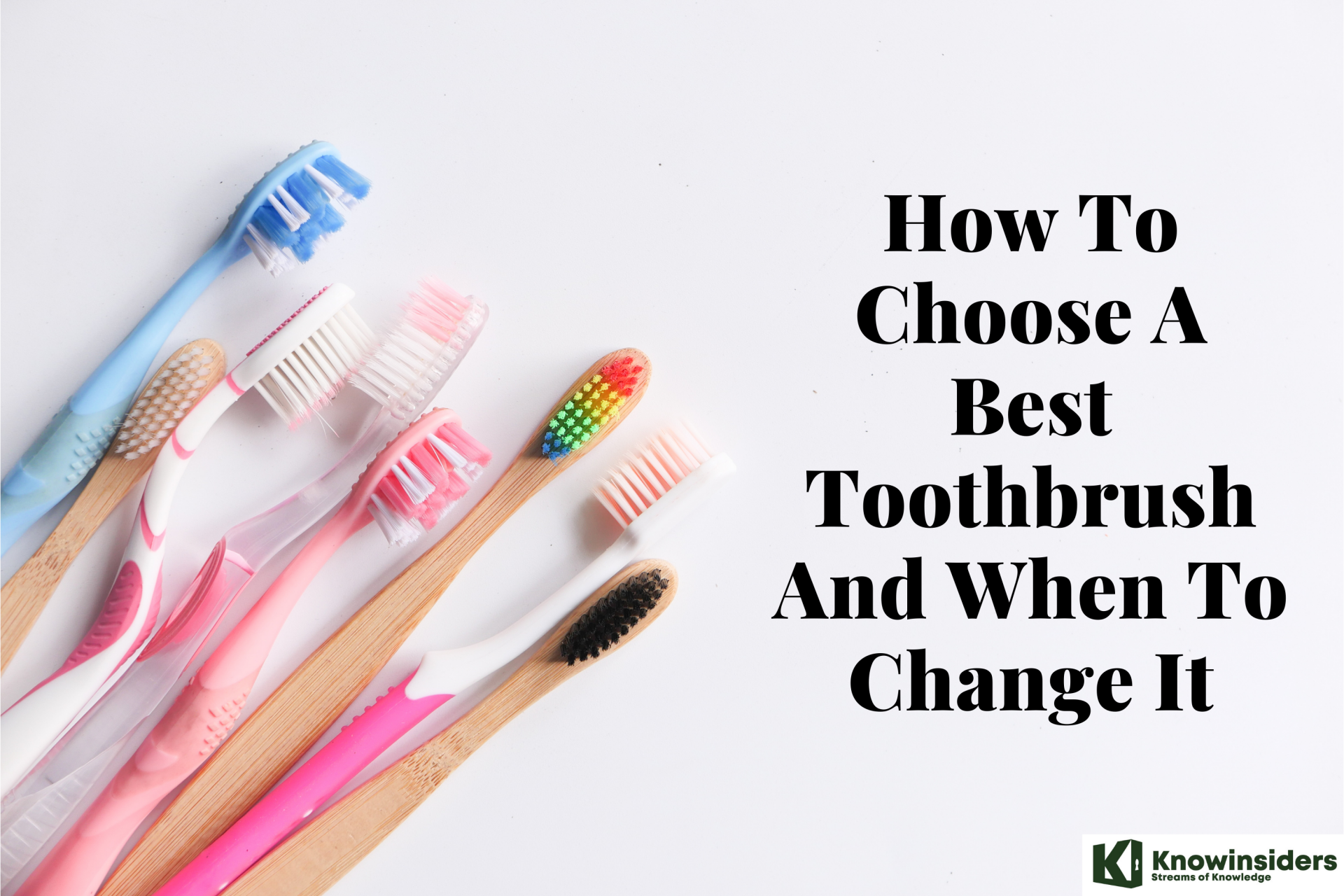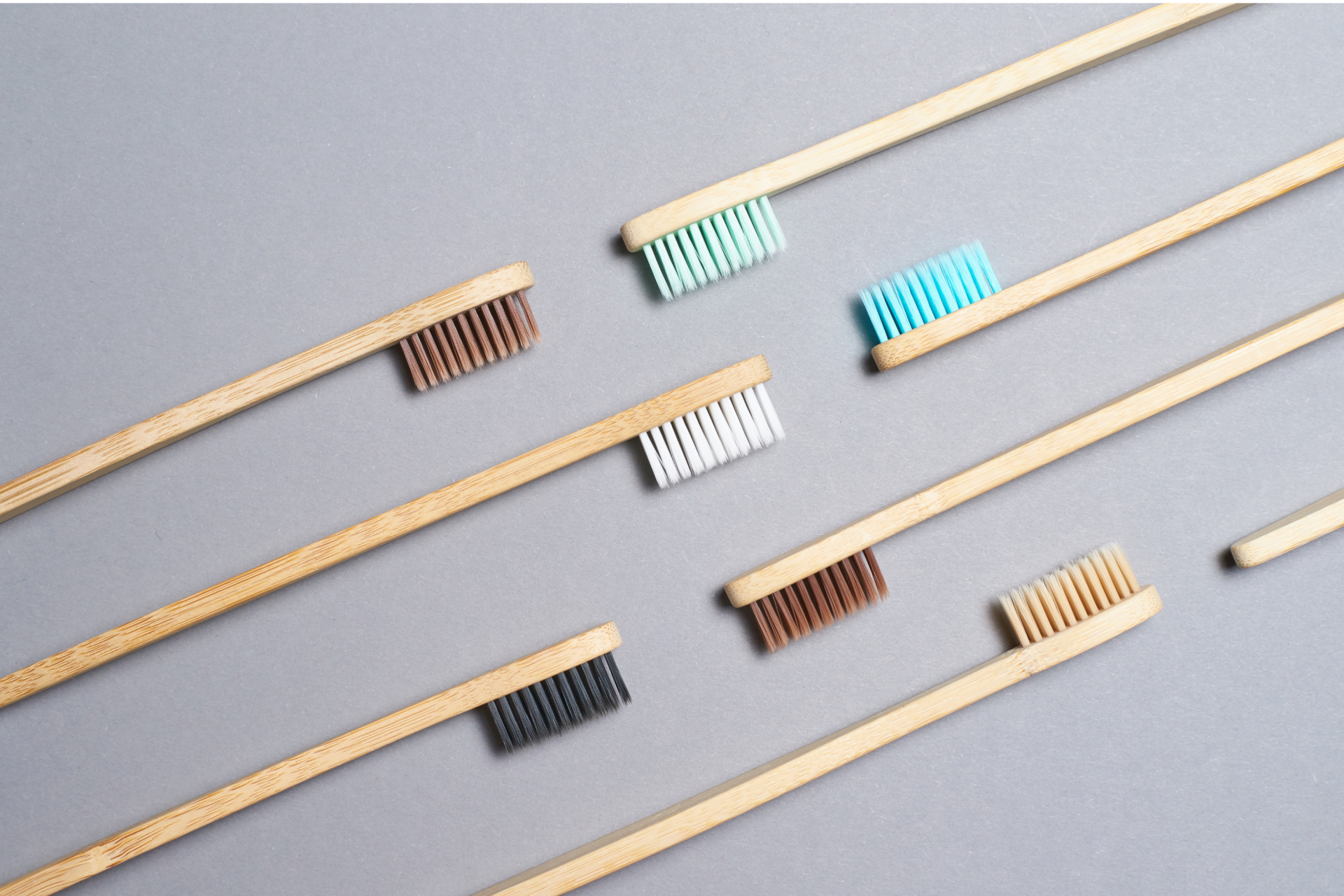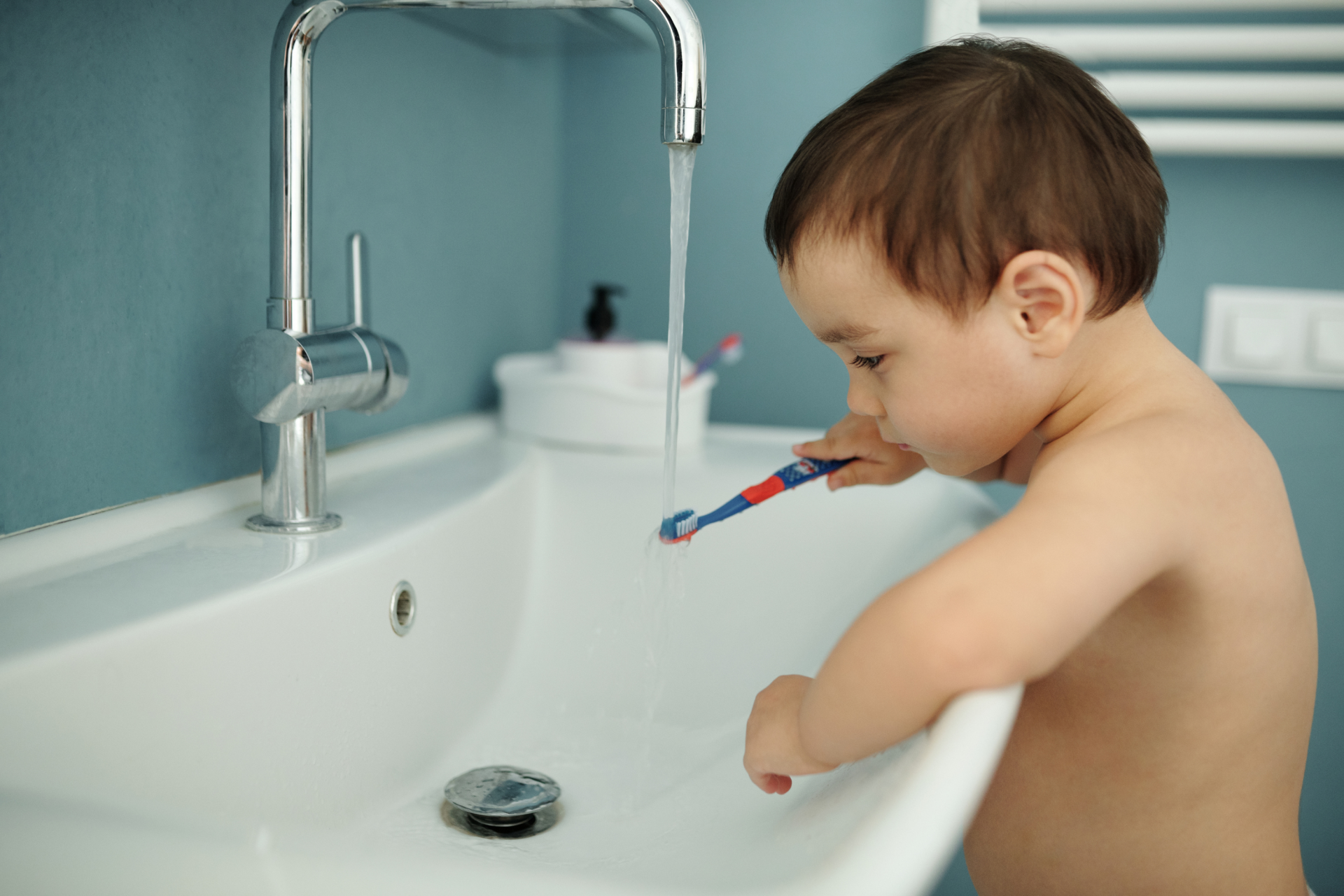How To Choose A Best Toothbrush and When To Change It
 |
| How To Choose A Best Toothbrush And When To Change It |
Toothbrushes are available in a variety of bristle hardness, usually marked “soft,” “medium” or “hard.” Most people will only need a soft or medium brush for their teeth. A hard brush can damage your teeth and gums, especially if you use it to scrub your teeth roughly.
Regardless of the type of brush you choose, take care to use the proper brushing technique. This means holding your brush at a 45-degree angle, positioned where your tooth and gum tissue meet. This can help clean under your gums. Also remember to brush your teeth’s surface gently, in a circular pattern – avoid roughly scrubbing in a back-and-forth motion. This can damage your gums!
Types of toothbrushes
The different types of toothbrushes available are:
Manual Toothbrush
The most common form of toothbrush available in our homes is the manual toothbrush. The four primary formats of the manual toothbrushes are Bristle Hardness, Head Shape, Bristle pattern and handle design.
Bristle hardness
Soft bristles are appropriate for most people, but medium- and hard-bristled toothbrushes are also available. The advantage of using a harder toothbrush is that it clears away more plaque, but it may irritate your gums and even wear away your enamel if you brush too hard.
Head shape
Conventionally shaped toothbrush heads are rounded or squared off. Diamond-shaped toothbrushes tend to be better at reaching the back and sides of your molars.
Bristle pattern
Several different bristle patterns are effective at cleaning teeth. Common varieties include wavy, crisscross, tapered and bristles with polishing cups. Your choice should depend on your dental needs and what feels the most comfortable.
Handle design
The four broad classes of toothbrush handles include straight, contra-angle, non-slip grip and flexible. The handle you choose should allow you to comfortably reach every tooth surface, including the very back of your mouth.
Electric Toothbrush
An electric toothbrush performs rotations of its bristles and cleans hard to reach places. These brushes tend to be costlier, however, there are effortless when brushing. You simply press the button and let the toothbrush do its work. Some even have timers to help you brush more effectively. It has been discovered that compared to a manual brush, the multi-directional power brush might reduce the incidence of gingivitis and plaque when compared to regular side-to-side brushing.
Electric toothbrushes are further divided into three types depending on the speed of its movement:
Rotating toothbrushes
Rotating toothbrushes have an oscillating effect. This means that the brush head rotates at high speed and in many cases also pulsates. The toothbrush makes a vertical brushing movement. With rotating toothbrushes, you have to brush each tooth individually. Do you have difficulty choosing your rear molars with a manual toothbrush? A rotating toothbrush is a good choice. Because of the small brush head, you can also easily reach the hard-to-reach places.
Sonic toothbrushes
Sonic toothbrushes have an oval brush head that pulsates at high speed. The toothbrush makes a vertical brushing movement. To brush your teeth, make the same brushing movement as you do with a manual toothbrush. Do you like brushing your teeth like with a manual toothbrush? A Sonic toothbrush is a good choice.
Inter-dental brush
An inter-dental also called as an interproximal brush is a small brush, typically disposable, either supplied with a reusable angled plastic handle or an integral handle, used for cleaning between teeth and between the wires of dental braces and the teeth. In short, it is used to clean the interdental space (big gap). The use of interdental brushes in conjunction with tooth brushing, has been shown to reduce both the amount of plaque and the incidence of gingivitis when compared to toothbrushing alone.
Sulcabrush
It is used specifically to clean along the gumline adjacent to the teeth. The bristles are usually shaped in a pointed arrow pattern to allow closer adaptation to the gums. A Sulcabrush is ideal for cleaning specific difficult-to-reach areas, such as between crowns, bridgework and crowded teeth.
End-tuft brush
It is a small round brush head comprising of seven tufts of tightly packed soft nylon bristles, trimmed so the bristles in the center can reach deeper into small spaces. The brush handle is ergonomically designed for a firm grip, giving the control and precision necessary to clean where most other cleaning aids cannot reach such as the posterior of the wisdom teeth (third molars), orthodontic structures (braces), crowded teeth, and tooth surfaces that are next to missing teeth. It can also be used to clean areas around implants, bridges, dentures and other appliances.
Chewable toothbrush
It is a miniature plastic molded toothbrush which can be placed inside the mouth. They are generally used by travelers and are sometimes available from bathroom vending machines. It is present in different flavors such as mint or bubble gum and should be disposed of after use.
Ecological toothbrushes
They are toothbrush made using biodegradable materials such as wooden handles, bristles of bamboo and/or replaceable heads. They try to avoid plastic which increases pollution. Since most of the people living today use the commonly available toothbrush made of plastic, every time we replace our toothbrush the pollution increases. The ecological toothbrush is being given a lot of push to conserve our nature.
How Important is the Type of Toothbrush to Oral Health?
 |
| Photo: Canva |
If by “type” you mean manual vs. powered, the difference doesn’t necessarily impact your oral health. The two types of toothbrush work the same and their effective use depends on the user’s brushing technique and habits.
However, electric toothbrushes can be easier to use for some people. How user-friendly a toothbrush is impacts its effectiveness, so type is important in this sense.
That said, not everyone who uses a powered toothbrush makes the most of it. So, again, brushing technique and habits make all the difference in everyone’s oral health.
Toothbrush design variations like bristle softness, head design, and handling can also affect brushing results.
How to Choose Best Toothbrush: General Tips
There are certain characteristics that you should look for in whatever toothbrush you choose, regardless of whether it is manual or powered.
Size. The best toothbrush head for you should allow you easy access to all surfaces of your teeth. For most adults, a toothbrush head a half-inch wide and one-inch tall will be the easiest to use and the most effective. Though there are larger toothbrush heads available, you may find that it is difficult to maneuver them to clean certain hard-to-reach areas, such as the sides and backs of your molars. The toothbrush should have a long enough handle so you can comfortably hold it in your hand.
Bristle variety. If you go to the drug store to purchase a manual toothbrush or a replacement head for your electric toothbrush, you will be able to select a toothbrush with soft, medium, or hard nylon bristles. For the vast majority of people, a soft-bristled toothbrush will be the most comfortable and safest choice. Depending on how vigorously you brush your teeth and the strength of your teeth, medium- and hard-bristled brushes could actually damage the gums, root surface, and protective tooth enamel. For even more tooth protection when you brush, be sure the bristles on the toothbrush you select have rounded tips.
Expert recommendation. To ensure your toothbrush has undergone rigorous quality control tests for cleaning effectiveness and safety, ask your dentist for a recommendation. Or look for manual or powered toothbrushes that have earned the American Dental Association (ADA) Seal of Approval.
For disposable toothbrushes, this seal ensures that: the bristles will have safe tips; the bristles will not fall out of the toothbrush under typical brushing conditions; the handle will withstand normal use; and the toothbrush will effectively reduce plaque build-up and gum disease in their early stages.
In addition to satisfying these conditions, powered or electric toothbrushes bearing the seal also must undergo safety testing in an independent lab and prove through clinical trials that the toothbrush is safe for use on the tissues of the mouth and teeth, as well as any dental hardware that may be in place.
Toothbrushes: Disposable or Electric?
As long as you clean your teeth regularly using proper brushing techniques, you should be able to reduce plaque build-up and keep your gums healthy with either a manual or powered toothbrush. Here are some things to keep in mind as you go about choosing the best toothbrush:
Cost. Although there are some more affordable powered toothbrush options being sold, electric toothbrushes cost many times more than manual toothbrushes. In addition to the initial expense of an electric toothbrush, you will need to replace the removable toothbrush head as often as you replace your manual toothbrush. Of course, if using an electric toothbrush helps you keep your teeth cleaner, you may make up for the expense with a reduction in dental bills.
Likability. When it comes down to it, the best toothbrush for you is going to be the one you're most likely to use -- and use well. Some people may not like the vibrating feeling of a powered toothbrush. Others might find an electric variety easier to use to clean all tooth surfaces. This may be especially true for people with conditions that limit mobility, such as painful arthritis. If you enjoy using your toothbrush, you're more likely to brush for the recommended length of time -- two minutes. Some powered varieties even have a built-in timer to let you know when you've devoted enough time to brushing.
Effectiveness. Numerous scientific studies have been conducted to investigate whether manual or powered toothbrushes are more effective at reducing gum disease and eliminating plaque. A review of nearly 30 studies comparing disposable and electric toothbrushes found that, overall, there was not a significant difference between electric and manual toothbrushes in their ability to remove plaque and prevent gum disease. But, evidence suggests that a certain type of powered toothbrush called a rotation oscillation toothbrush (the bristles go round and round and back and forth) is more effective than manual toothbrushes.
Safety. Although all toothbrushes with an ADA Seal of Approval have been tested for safety, there may be certain individuals for whom a particular type of toothbrush is safer. If you tend to brush too vigorously, which can damage your gums and teeth, a powered toothbrush may make it easier for you to be gentle on your gums and teeth and get them clean at the same time. Some studies suggest that using a powered toothbrush may increase the amount of bacteria in the bloodstream more than a manual toothbrush. This does not pose a risk for healthy people with normal immune systems and healthy hearts. But it could increase the likelihood that people with certain heart conditions could acquire a potentially dangerous infection in the heart. Further investigation is needed to determine whether this should be a cause for concern.
How to Choose The Best Toothbrush for Children
 |
| Photo: Canva |
When it comes to choosing the best toothbrush for your child, it's important to opt for one that they will use properly and regularly. There are a variety of disposable and electric options available for kids. And they come in a variety of colors and often feature children's favorite characters from classic stories and popular cartoons. Some varieties even play music to help your child know how long to brush.
To choose a good toothbrush for your child, try the following suggestions:
- Make sure the toothbrush you select has an ADA Seal of Approval.
- Pick a child-sized toothbrush with soft bristles.
- If your children are old enough, have them help you pick out their toothbrushes. Getting your children involved in the process and excited about a new toothbrush may make tooth-brushing a more enjoyable task.























